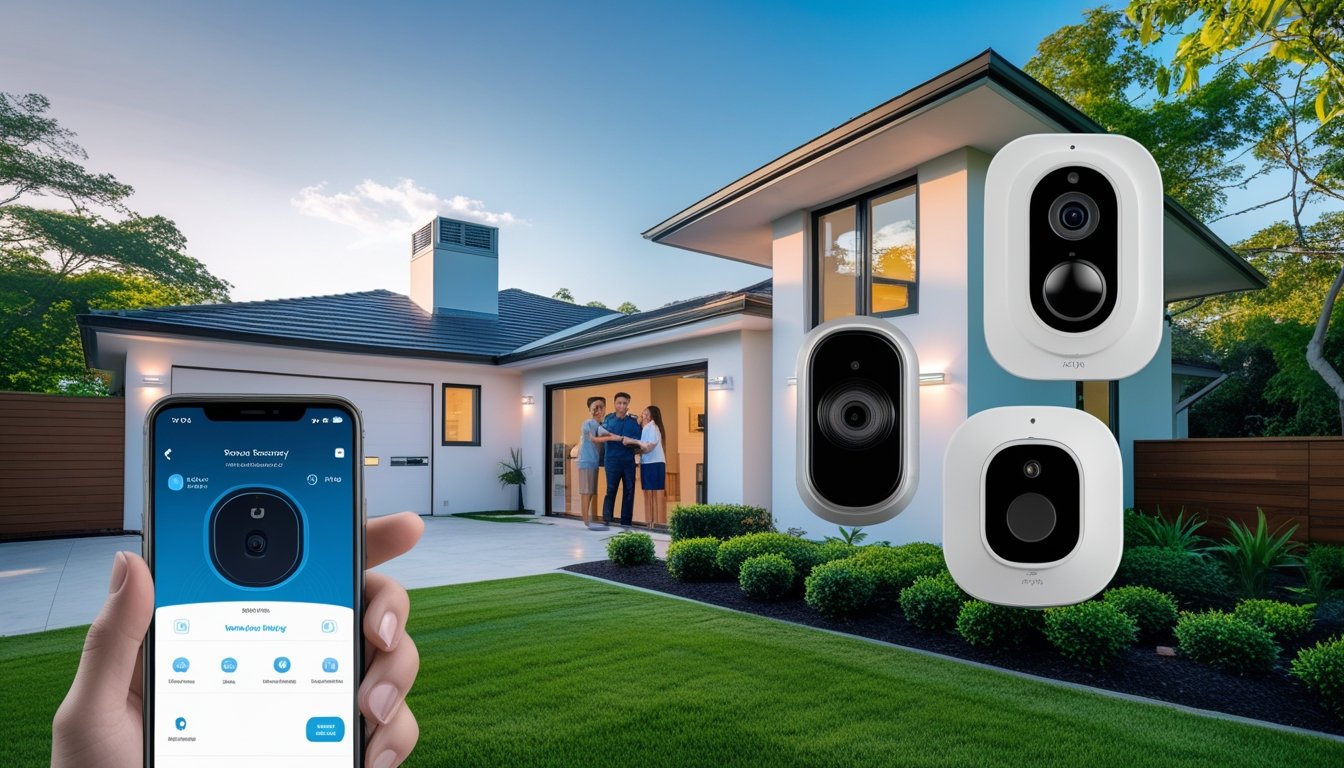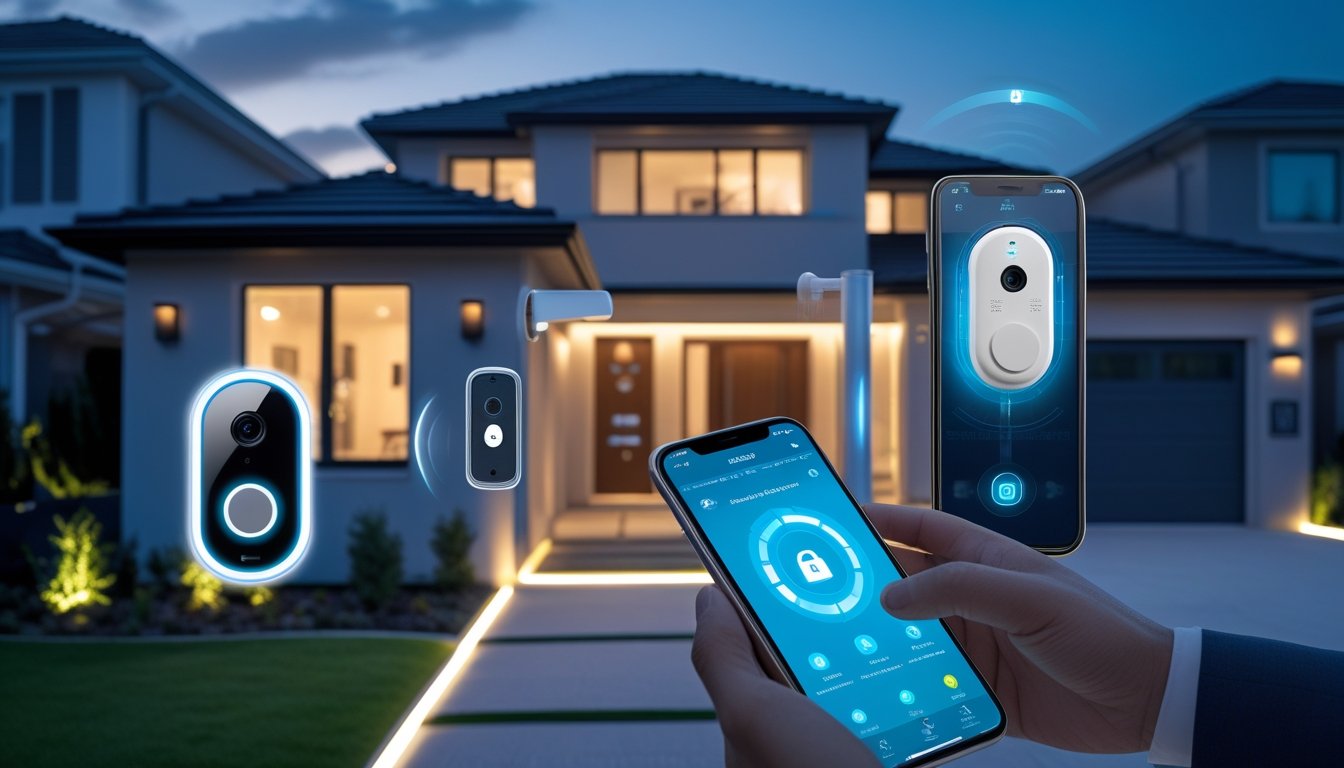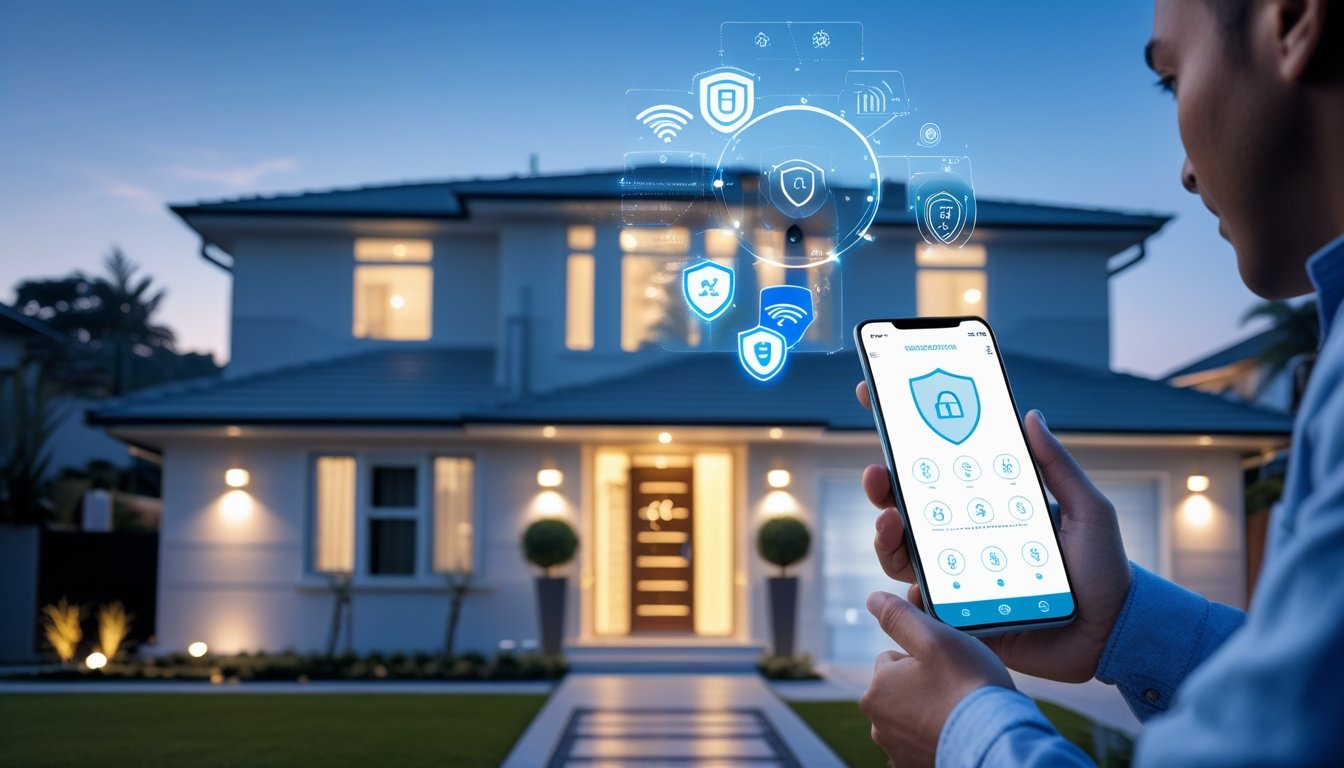Late updated: 26 Sep 2025 08:09
Written by: Elena Prescott
Emerging Trends In Home Security For 2024: Innovations To Watch
In 2024, the realm of home security is experiencing transformative shifts driven by cutting-edge innovations and increasing homeowner demands for safety, privacy, and ease of use. As we delve into the year, one trend that stands out is the seamless integration of smart home devices into robust security systems. These systems enable us to control locks, cameras, and alarms through central hubs or mobile apps, offering multi-layered security solutions.

Advancements in artificial intelligence are playing a critical role in enhancing surveillance capabilities. AI-equipped cameras and sensors detect unusual activity and provide real-time alerts, allowing homeowners to respond promptly. This technology not only enhances security but also offers insights into patterns and potential vulnerabilities in our homes.
Furthermore, the ongoing evolution in connectivity and the Internet of Things (IoT) continues to shape the security landscape, making it integral to our homes' ecosystems. With innovations in biometrics and privacy safeguards, we're able to prevent unauthorised access and protect personal data, reinforcing the importance of privacy in our interconnected world.
Key Takeaways
- Smart home device integration offers enhanced control and security.
- AI boosts surveillance precision and provides timely alerts.
- IoT developments enhance connectivity and privacy protection.
Key Innovations and Trends in Home Security for 2024

In 2024, home security is experiencing transformative changes driven by technological advancements. Our focus includes AI-powered security systems, seamless integration with smart home devices, and cutting-edge biometrics for enhanced protection of residential spaces. These innovations not only improve safety but also offer increased convenience and control for homeowners.
AI and Machine Learning in Security Systems
Artificial Intelligence (AI) and machine learning are revolutionising the way we secure our homes. These technologies offer real-time monitoring, allowing systems to learn and adapt to potential threats through pattern recognition and predictive analytics. AI can evaluate unusual activities and distinguish between typical household movements and possible intrusions, leading to fewer false alarms.
Moreover, these systems can communicate with integrated devices, enabling prompt action during a security breach. They're particularly effective when employed in smart cameras and alarms that can signal law enforcement or notify homeowners instantly. AI's adaptive capabilities ensure that security systems remain effective and responsive to evolving security challenges.
Integration with Smart Home Devices
Smart home integration is becoming a standard feature in modern security solutions. Imagine controlling your home's security settings from a smartphone app, whether you're at home or miles away. This capability adds convenience and peace of mind. Interconnectivity between alarm systems, lights, and locks means that when an alarm is triggered, all systems work together.
Integration includes not only seamless device operation but also interoperability with non-security devices. For instance, smart thermostats can be linked with alarm systems to manage energy usage when security settings change. This interconnected approach ensures that every aspect of home automation contributes to overall safety and efficiency.
Smart Surveillance Cameras and Sensors
The development of smart surveillance cameras and motion sensors is transforming home monitoring. These devices offer high-definition video feeds and allow us to observe our property in real-time. Night vision, wide-angle lenses, and cloud storage options are just a few features that enhance their appeal.
Enhanced with AI, these cameras can identify faces and even distinguish between humans, pets, and inanimate objects. Smart sensors can detect unusual activity and send alerts to our devices, providing both inside and perimeter security. The combination of real-time analysis and intelligent notifications ensures homeowners can respond swiftly to any potential threat.
Smart Locks and Biometric Access
The shift to smart locks and biometric access is one of the most exciting developments in home security. These systems eliminate the need for physical keys and provide an added layer of security. Residents can unlock their doors using smartphones, fingerprint scanners, or even facial recognition.
These technologies not only enhance security but also offer convenience. Temporary access can be granted to guests and service providers through digital means. With biometric authentication, the likelihood of unauthorised entry significantly reduces. Through continuous monitoring and data processing, smart locks can adapt to changing security needs, offering tailored accessibility and protection.
Security, Privacy, and Connectivity

Security systems in 2024 are increasingly interconnected and reliant on new technologies that enhance both functionality and potential vulnerabilities. We explore key areas such as cybersecurity, cloud storage solutions, and the transformative role of 5G connectivity in shaping the security landscape.
Cybersecurity and Data Protection
Cybersecurity has become a paramount concern as home security devices often store sensitive information. With more systems connected to the internet, protecting data privacy is crucial. Our smart devices, including security cameras and thermostats, are potential targets for hackers. Strong encryption standards and regular software updates are essential to safeguard against these threats.
Manufacturers are now prioritising data protection features. They employ advanced encryption protocols and implement cutting-edge security measures. We must be vigilant about configuring privacy settings correctly to guard against unauthorised access. Awareness and education regarding cybersecurity are critical as homeowners navigate these increasingly intricate systems.
Cloud-Based Storage Solutions
Cloud-based storage enhances security system efficiency by allowing seamless access to recorded footage from anywhere. By storing data in the cloud, we eliminate the risk of physical damage or theft of locally stored video clips. Additionally, these solutions offer scalable storage options to accommodate varying data requirements.
Cloud services provide automatic updates and backups, ensuring data reliability and accessibility. Privacy concerns arise with remote storage, but reputable providers employ robust security measures, including end-to-end encryption and multi-factor authentication. It's important to choose providers with a strong track record in data protection and confidentiality.
5G Connectivity and System Speed
5G technology is revolutionising how security systems communicate and operate. Its high-speed connectivity enables real-time data transmission, which is vital for immediate threat detection and response. We can now monitor high-quality video streams with minimal latency, enhancing the overall effectiveness of surveillance systems.
The efficiency of 5G extends beyond speed. It supports a greater number of devices and facilitates the advanced integration of smart home technologies. With improved system responsiveness, homeowners can control diverse devices, from alarms to security cameras, with greater precision. As 5G infrastructure expands, its impact on security systems will become increasingly profound, delivering faster and more reliable service.
Frequently Asked Questions
As we navigate the ever-evolving landscape of home security in 2024, several key topics stand out. We'll explore the impact of biometric systems, the role of artificial intelligence, the integration of smart home ecosystems, network cybersecurity, mobile device connectivity, and advancements in privacy-enhancing surveillance technologies.
What are the latest advancements in biometric home security systems?
Biometric security systems have become more sophisticated, utilising technologies such as facial recognition and fingerprint scanning for seamless and secure access. In 2024, these systems offer faster processing and reduced error rates, providing enhanced convenience and security for homeowners.
How is artificial intelligence shaping residential security technology?
Artificial intelligence plays a vital role in modern home security by enabling systems to detect irregularities and potential threats more efficiently. AI-driven systems can analyse patterns, provide predictive insights, and even automate security responses, resulting in more proactive and reliable security measures.
What role do smart home ecosystems play in enhancing home security?
Smart home ecosystems have become integral to security setups, offering interconnected solutions that improve safety. Devices such as smart locks, cameras, and alarms can now be controlled and monitored through a central hub, providing homeowners with a streamlined and effective way to manage their security.
Are there new methods for securing home networks against cyber threats?
Cybersecurity remains paramount as home networks expand to include more connected devices. Advances in encryption protocols, user authentication, and automated network monitoring help protect against intrusions and data breaches, ensuring that digital threats are mitigated effectively.
What developments have there been in integrating home security with mobile devices?
Mobile integration allows homeowners to manage their security systems remotely. Recent developments include enhanced mobile apps that provide real-time alerts, video streaming, and system control, offering flexibility and peace of mind by allowing users to stay connected to their homes from anywhere.
How have surveillance technologies evolved to ensure greater homeowner privacy?
Surveillance technologies have advanced with a focus on balancing security and privacy. New systems incorporate privacy features such as geofencing, encryption, and limited data retention, ensuring that while homes are protected, personal privacy is also safeguarded.
